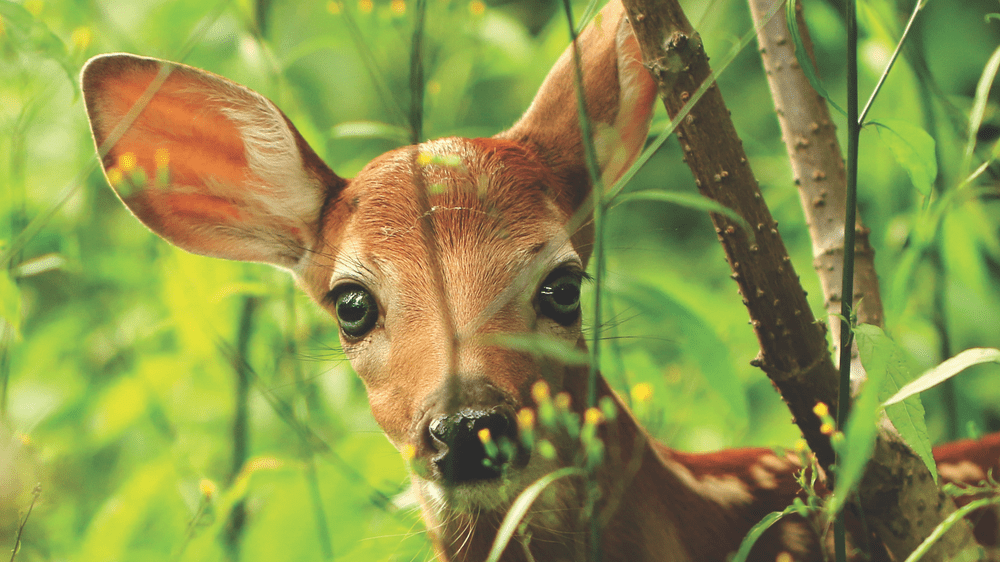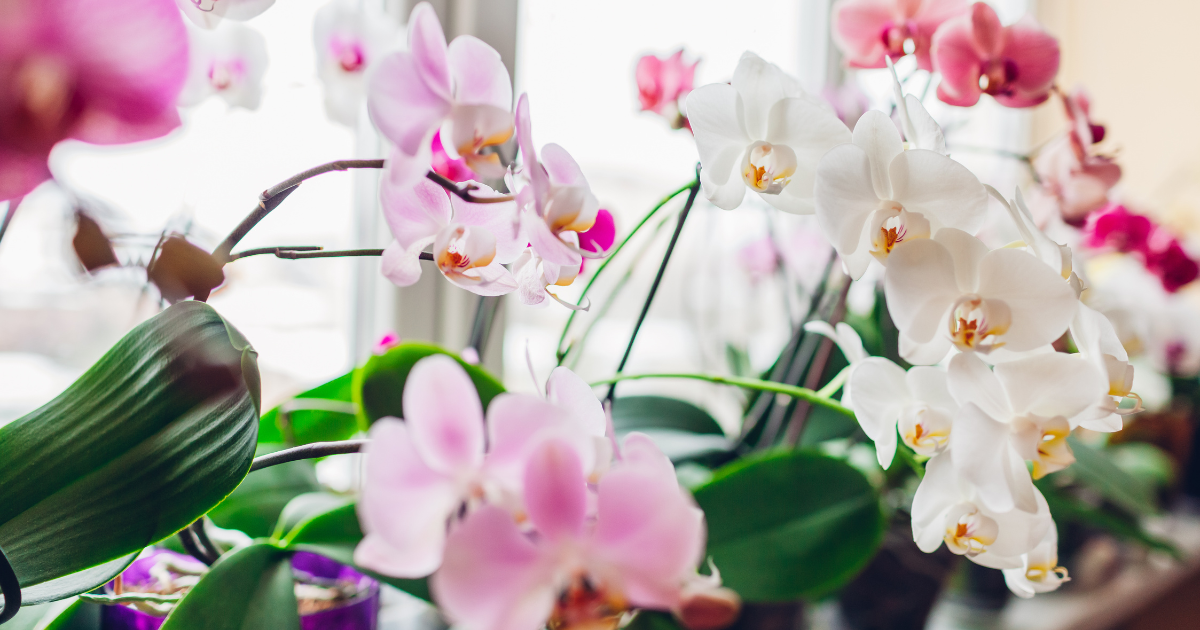All gardeners have experienced a troublesome pest. From rabbits eating your lettuce to mosquitoes feasting on your neck, you are bound to encounter pests while outside in your garden. Here is our shortlist of the most effective controls for select pests. These solutions are, for the most part, no farther away than your kitchen.

Mosquitoes
Interesting pests, mosquitoes. They love to suck our blood and there are many insectivore birds and other “insectivores” like frogs and toads that like to gobble them up. Fact is, we cannot afford to live without them, as they are a primary food source for so many desirable wildlife. However, keeping them under control around the cottage and home is something that we understand.
The Solution
- Empty bird baths once a week. Mosquitoes gestate over a 10-day period when temperatures hover around 26°C (79°F), so dumping standing water once a week becomes an important habit. Replace the old water with fresh.
- Give it a shake. Mosquitoes emerge from standing water through the water surface as adults. The tension on the top of the water is required for a successful escape. If you stir up the water once a day, it is enough for most mosquitoes to bite the dust before they mature into adults.
- Break the surface tension of the water with a drop of natural dishwashing liquid. This prevents the larvae from becoming blood-sucking adults.
- Clip fabric softener sheets onto the back of your hat — it is said to deter mosquitoes and deer flies too. We have tried it, and it works.
- Consider installing waterfalls or fountains. Mosquitoes do not breed in moving water.

Slugs & Snails
Indeed, these are legitimate garden pests. Everyone knows that slugs and snails (which are slugs with a shell) love to eat hostas and many other garden plants.
The Solution
- Pour beer into a pan. Fill a pie plate about half full with cheap beer (why sacrifice the good stuff at the slug alter?) and sink it into your garden under the protection of the hosta leaves so that the edge of the plate is level with the soil around it. Slugs slip in for a sip (they like the yeast) and drown. Happy, no doubt. (Alternatively, you can buy the Slug Saloon, which also works well. You provide the beer.)
- Use dried egg shells. Crunch them up as finely as you can and place them in the path of slugs and snails. The scratchy nature of the shells makes it impossible for the mollusks to enjoy the trip, so they turn around and go elsewhere or dry up.
- Try upside-down grapefruit halves. Eat the grapefruit and sink the skin into the ground, level with the surface. Fill with beer for a sure-fire trap.

Rabbits
Now we move on to bigger critters. Have you noticed the profusion of rabbits around your neighbourhood this year? We certainly have. They make us laugh out loud many days as they chase one another around the vegetable garden. But they appear much less cute as they chow down on our Swiss chard and carrot tops.
The Solution
- Apply a cocktail of blood meal and some human hair. No doubt you will have access to clippings from a do-it-yourself haircut at home. Mmmm. Yummy.
- Concoct a solution of two raw eggs, 4 cups of water, and 1 teaspoon of cayenne pepper. Mix in a spray bottle and apply to the ground where the problem persists. Rabbits hate it. For the best results, the eggs should be rotten.
- Fence in your vegetables with chicken wire.
The fence should be 1 metre (3 feet) high and buried at least 15 cm (6 inches) deep. Rabbits dig. - Apply a cocktail of blood meal and some human hair. You will undoubtedly have access to clippings from a do-it-yourself haircut at home. Mmmm. Yummy.
- Concoct a solution of two raw eggs, 4 cups of water, and 1 teaspoon of cayenne pepper. Mix in a spray bottle and apply to the ground where the problem persists. Rabbits hate it. For the best results, the eggs should be rotten.
- Fence in your vegetables with chicken wire.
The fence should be 1 metre (3 feet) high and buried at least 15 cm (6 inches) deep. Rabbits dig.

Deer
As we cross our great country, the question of how to deter deer from our Canadian gardens is the most persistent and widespread of them all, like deer themselves. They’re not so much a problem in urban centres, but get a few minutes outside of the city and bingo: deer. There are reported to be 10 times as many deer today than when the Europeans arrived here about 500 years ago. And they live on about 10 percent of the land mass of that historic time. You do the math. And we wonder why they are “persistent and widespread.”
If you are fortunate enough to find yourself in Invermere, British Columbia, any time soon, you will notice that every tree on the main street has a wire cage around it. These have been installed at great expense to taxpayers to prevent deer damage. Having a garden in Invermere is challenging, as the deer there have developed a palate for just about every living thing with leaves. Even the list of deer-resistant plants that we offer on markcullen.com is pretty much useless there.
While on a recent speaking engagement in Ontario’s Muskoka region, we took questions from the audience. The inquiries about deer damage quickly became a theme of the evening. “Everyone with a deer problem, there is a special meeting afterwards. We will sit in a circle and have a deer therapy session,” we suggested. It got a laugh, but we did not meet afterward and there were no definitive answers to this dilemma.
The Solution
- Repel deer with rotten eggs. Of all of the homemade recipes that people have recommended
to Mark over the years, it is always the ones that prominently feature rotten eggs that get the best results as a deer repellent, based on anecdotal evidence. Mix three rotten eggs in 4 cups of water and add hot pepper sauce and garlic for good measure. - It is said that hanging Irish Spring soap in net bags on tempting plants works. We have also heard that it does not work. Maybe it depends on the deer in your neighbourhood.
- Spray Bobbex liquid deer repellent on plants.

Raccoons
Sorry, no panacea here. In our books, raccoons and squirrels are higher life forms. They outsmart us every time. They can chew through almost anything, but not a metal container.
The Solution
- Keep your garbage covered and your garage door shut tight at night.
- Put a lid on your compost pile and secure it with wire cables.

Wasps
Nobody is very fond of the garden-variety wasp. Wasps can be aggressive, and when they sting, you know it immediately. Some people are violently allergic to wasp stings. So we are not about to tell you this story lightly, in their defence.
Wasps are one of the primary pollinators in our spring gardens. The queen of the wasp colony lays eggs that hatch into larvae that need to be fed by the adult wasps. The adults busy themselves visiting blossoms to gather up pollen and nectar to take back to the larvae as food and nutrition. The larvae, in return, produce
a sticky, sweet substance that nourishes the adults so that they can go out and forage for another day. You will note that wasps are not aggressive in the spring or early summer unless you really annoy them.
About midsummer, the queen runs out of steam and stops laying eggs. As a result, larvae production slows down and the adults are left without their source of sticky, sweet sustenance. This is when they head out to your yard and garden, looking for your sweet and sticky stuff. A bunch of rotting apples are a prize for a late-season wasp. Disturb a foraging wasp when it is hungry, and you could be asking for trouble with a stinger on the end.
The point? Wasps are not all bad. At least in the spring — when it is most important that plant flowers become fertilized — wasps are making a significant contribution as nature’s pollinators.
The Solution
- Bait a store-purchased wasp trap using one-third non-carbonated fruit juice and two-thirds water. Change weekly.
- Do not allow the crab apples to drop fruit and rot there. The same goes for other fruiting trees in your yard.
- Try fake wasp nests. We have also found that the fake wasp nests available at retailers are also effective. Wasps are territorial: They do not invade each other’s turf. To avoid wasp wars, they politely go elsewhere when a wasp nest is already in the vicinity. Exactly how large that vicinity is may depend on the aggressiveness of the wasps in your neighbourhood. We say about one every 5 to 7 metres (16 to 23 feet).
One last word about garden pests: Humans have their own opinions about what garden pests are. In the natural world, most of them are a part of the web that exists in the outdoors, a web of interdependent insects, bacteria, birds, amphibians, mammals and … You get the idea.
The only real pests to Mother Nature are the invasive kind that arrived from some other part of the world, like the emerald ash borer. And humans.
Mark Cullen is an expert gardener, author, broadcaster and tree advocate
and holds the Order of Canada. His son, Ben, is a fourth-generation
urban gardener and a graduate of the University of Guelph and Dalhousie
University in Halifax. Follow them at markcullen.com, @MarkCullen4
(Twitter) and @markcullengardening (Facebook) and look for their latest book, Escape to Reality.
Follow them at markcullen.com, @MarkCullen4, facebook.com/markcullengardening and biweekly on Global TV’s national morning show, The Morning Show.













